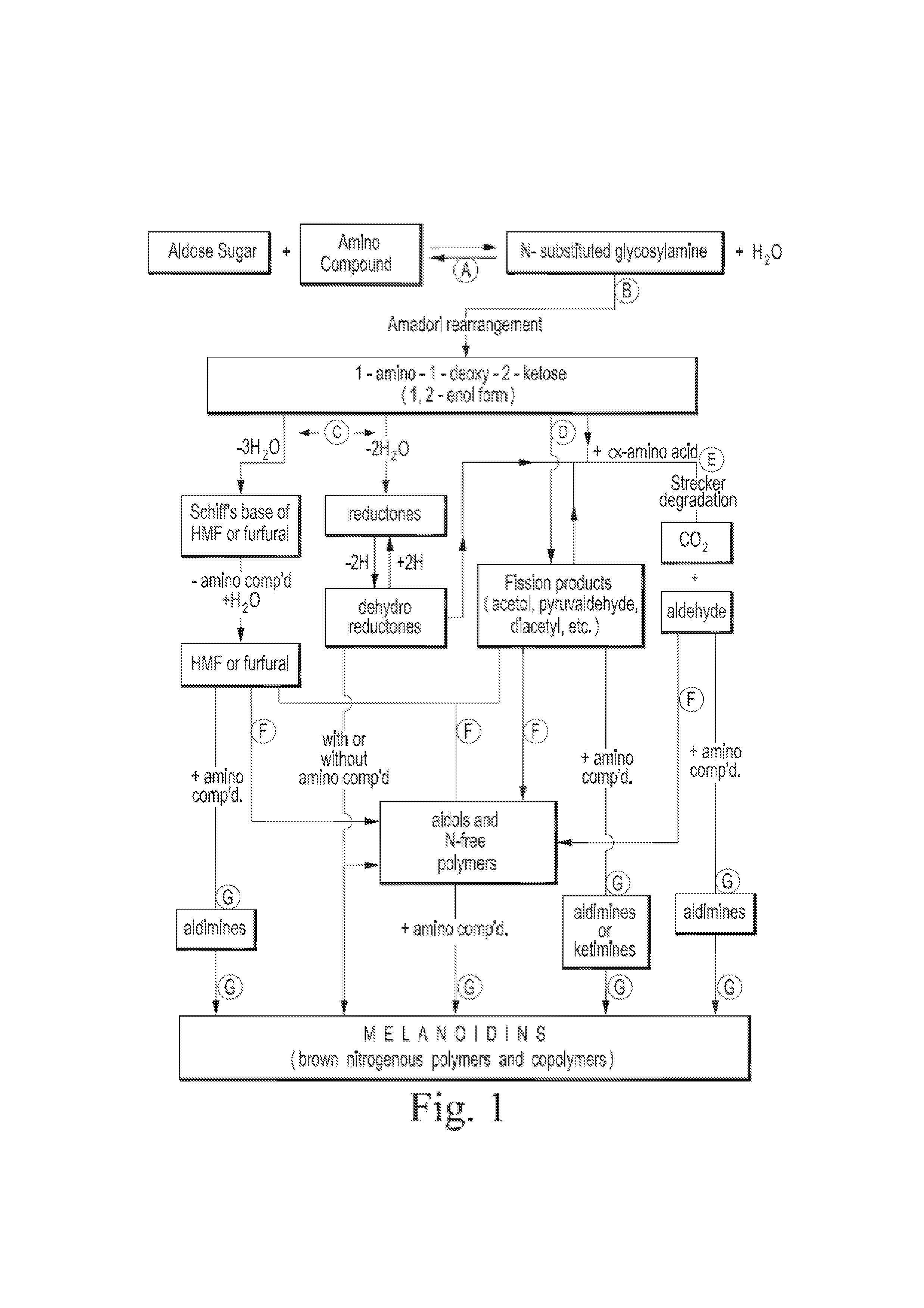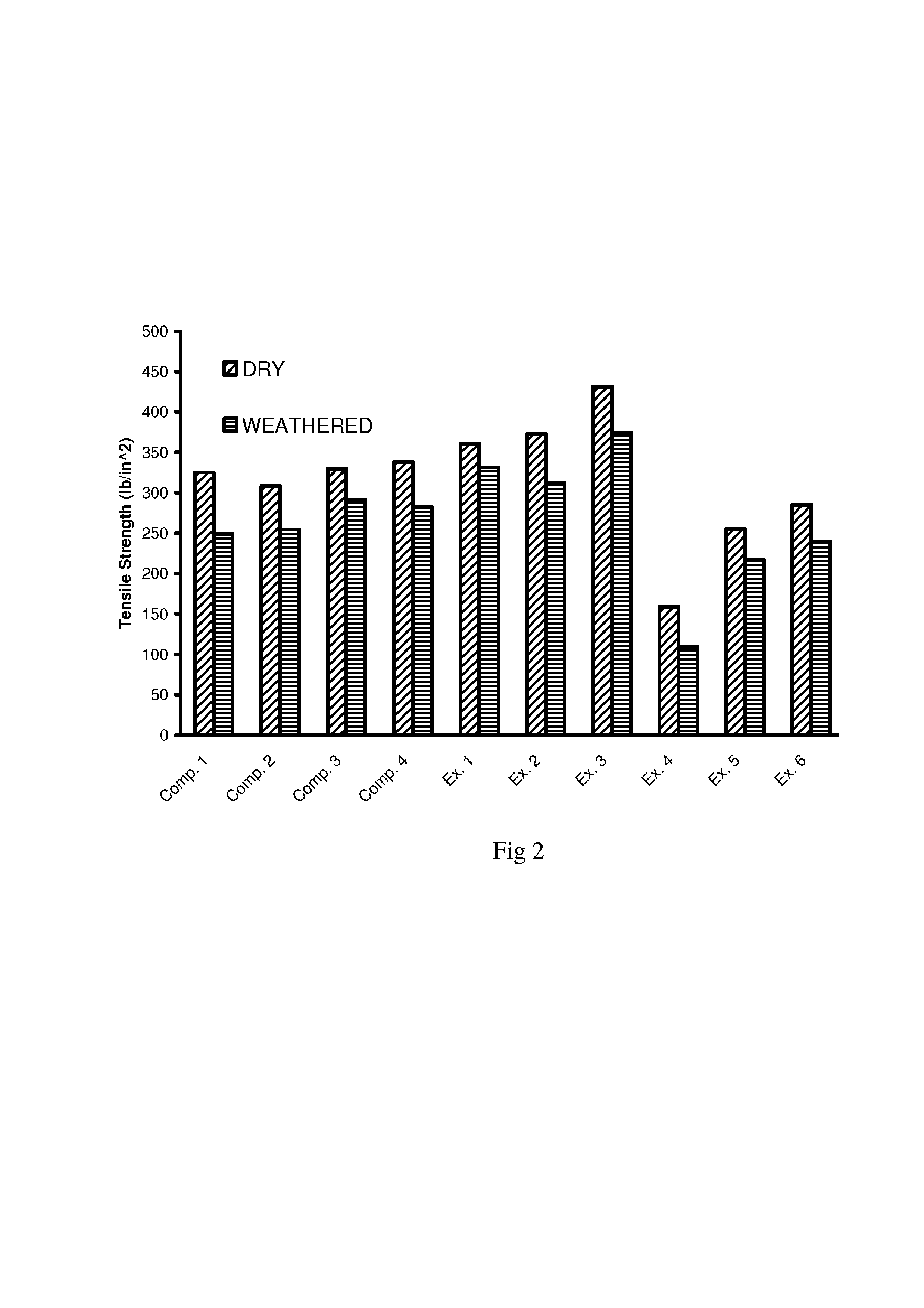Organic acid carbohydrate binders and materials made therewith
a technology of organic acid carbohydrate and binders, which is applied in the field of binder formulations and materials made therewith, can solve the problems of exhibiting lower reaction rates, reducing the application range of phenol-formaldehyde binders, so as to achieve the effect of reducing reaction rates, prolonging cure times, and promising performance characteristics
- Summary
- Abstract
- Description
- Claims
- Application Information
AI Technical Summary
Benefits of technology
Problems solved by technology
Method used
Image
Examples
example 1
Composition Based on Dry Solids
[0068]85.04 parts carbohydrate (dextrose)[0069]13.09 parts organic acid (para-toluenesulfonic acid)[0070]1.56 parts amine base (ammonia)[0071]0.31 parts silane (gamma-aminopropyltriethoxysilane)
example 2
Composition Based on Dry Solids
[0072]80.69 parts carbohydrate (dextrose)[0073]16.9 parts organic acid (para-toluenesulfonic acid)[0074]2.11 parts amine base (ammonia)[0075]0.30 parts silane (gamma-aminopropyltriethoxysilane)
example 3
Composition Based on Dry Solids
[0076]76.26 parts carbohydrate (dextrose)[0077]20.96 parts organic acid (para-toluenesulfonic acid)[0078]2.5 parts amine base (ammonia)[0079]0.28 parts silane (gamma-aminopropyltriethoxysilane)
PUM
| Property | Measurement | Unit |
|---|---|---|
| Fraction | aaaaa | aaaaa |
| Fraction | aaaaa | aaaaa |
| Fraction | aaaaa | aaaaa |
Abstract
Description
Claims
Application Information
 Login to View More
Login to View More - R&D
- Intellectual Property
- Life Sciences
- Materials
- Tech Scout
- Unparalleled Data Quality
- Higher Quality Content
- 60% Fewer Hallucinations
Browse by: Latest US Patents, China's latest patents, Technical Efficacy Thesaurus, Application Domain, Technology Topic, Popular Technical Reports.
© 2025 PatSnap. All rights reserved.Legal|Privacy policy|Modern Slavery Act Transparency Statement|Sitemap|About US| Contact US: help@patsnap.com


